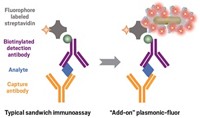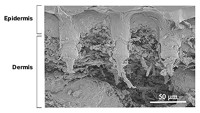Advertisement
Grab your lab coat. Let's get started
Welcome!
Welcome!
Create an account below to get 6 C&EN articles per month, receive newsletters and more - all free.
It seems this is your first time logging in online. Please enter the following information to continue.
As an ACS member you automatically get access to this site. All we need is few more details to create your reading experience.
Not you? Sign in with a different account.
Not you? Sign in with a different account.
ERROR 1
ERROR 1
ERROR 2
ERROR 2
ERROR 2
ERROR 2
ERROR 2
Password and Confirm password must match.
If you have an ACS member number, please enter it here so we can link this account to your membership. (optional)
ERROR 2
ACS values your privacy. By submitting your information, you are gaining access to C&EN and subscribing to our weekly newsletter. We use the information you provide to make your reading experience better, and we will never sell your data to third party members.
Analytical Chemistry
Low-Cost Diagnostics On A Piece Of Paper
Millimeter-sized channels patterned on chromatography paper are the basis of an inexpensive bioassay technique
by Celia Henry Arnaud
January 31, 2007
Many clinical diagnostic methods are too complicated and too expensive to be used widely in developing countries. George M. Whitesides and his coworkers at Harvard University have thus come up with a practical method for making low-cost, portable, and simple multiplexed bioassays out of paper (Angew. Chem. Int. Ed., DOI: 10.1002/anie.200603817).
Their photolithography technique involves soaking chromatography paper in photoresist, using a mask and ultraviolet light to create a millimeter-sized channel and wells, and adding reagents for detecting multiple biological analytes.
The researchers made a glucose assay in one well based on the enzymatic oxidation of iodide to iodine with an accompanying color change from clear to brown. In a different well, they detect a protein on the basis of the color change of tetrabromophenol blue from yellow to blue when it binds the protein. The sample fluid fills the channel within a minute, and then more than 10 minutes are required for the colors to develop fully. The bioassay paper can detect clinically relevant concentrations of glucose and protein, the researchers report.





Join the conversation
Contact the reporter
Submit a Letter to the Editor for publication
Engage with us on Twitter